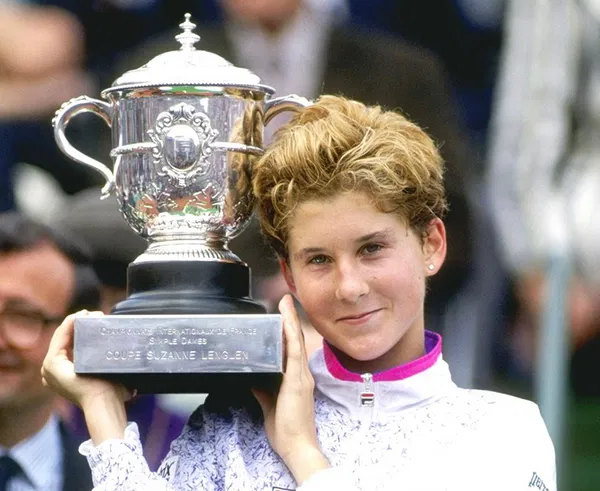
Monica Seles: The Unwritten Legacy of a Tennis Queen Interrupted
What if Monica Seles had never been stabbed in 1993? It’s a haunting question that resurfaces every time her name is mentioned in tennis circles—a question that continues to echo through time, casting a long shadow over women’s tennis history. On April 30, 1993, the sport lost more than a match—it lost the trajectory of what many believe could have been the most dominant career in tennis history.
By the age of 19, Seles had already won eight Grand Slam titles and held a staggering 93-7 record in her first 100 matches—better than legends like Chris Evert and Steffi Graf. She had also enjoyed a 178-week run as World No. 1, cutting Graf’s dominance short and establishing herself as the most feared competitor on the tour. But then came the unthinkable: a stabbing by a deranged Steffi Graf fan during a match in Hamburg.
The attacker, Guenter Parche, admitted he wanted to hurt Seles so badly that she couldn’t continue playing. And in many ways, he succeeded. Though Seles made a courageous comeback in 1995 and even reached two more US Open finals, the same magic, speed, and dominance never quite returned. She won her final Slam at the 1996 Australian Open, finishing her career with nine majors—when many believed she was poised to easily double that tally.
Despite the setback, her impact remains indelible. As the Tennis Hall of Fame recently shared in a tribute, “@monicaseles10s didn’t just show up, she showed out. Practice or match, she gave 110 percent.” Seles herself echoed this in a reflective clip, saying she approached every point—practice or game—with relentless intensity, drawing comparisons to Jimmy Connors.
Chris Evert, an 18-time Grand Slam winner, has never hidden her admiration. She commented on the Hall of Fame post, “Monica is the BEST! Love my friend ❤️.” Evert has long believed in Seles’ potential, once recalling how the teen phenom beat her at just 15 years old in Houston, calling it a moment that revealed “a player like no other.” Even then, Evert had predicted Seles would rise to the top 10—an understatement in hindsight.
The “what if” of Monica Seles remains perhaps the greatest in all of women’s tennis. With a healthy body and uninterrupted focus, she could have surpassed Steffi Graf’s 22 Grand Slam titles, altering the very fabric of the sport’s history. Instead, her story is one of brilliance, bravery, and what might have been—a legend not fully written, but eternally remembered.